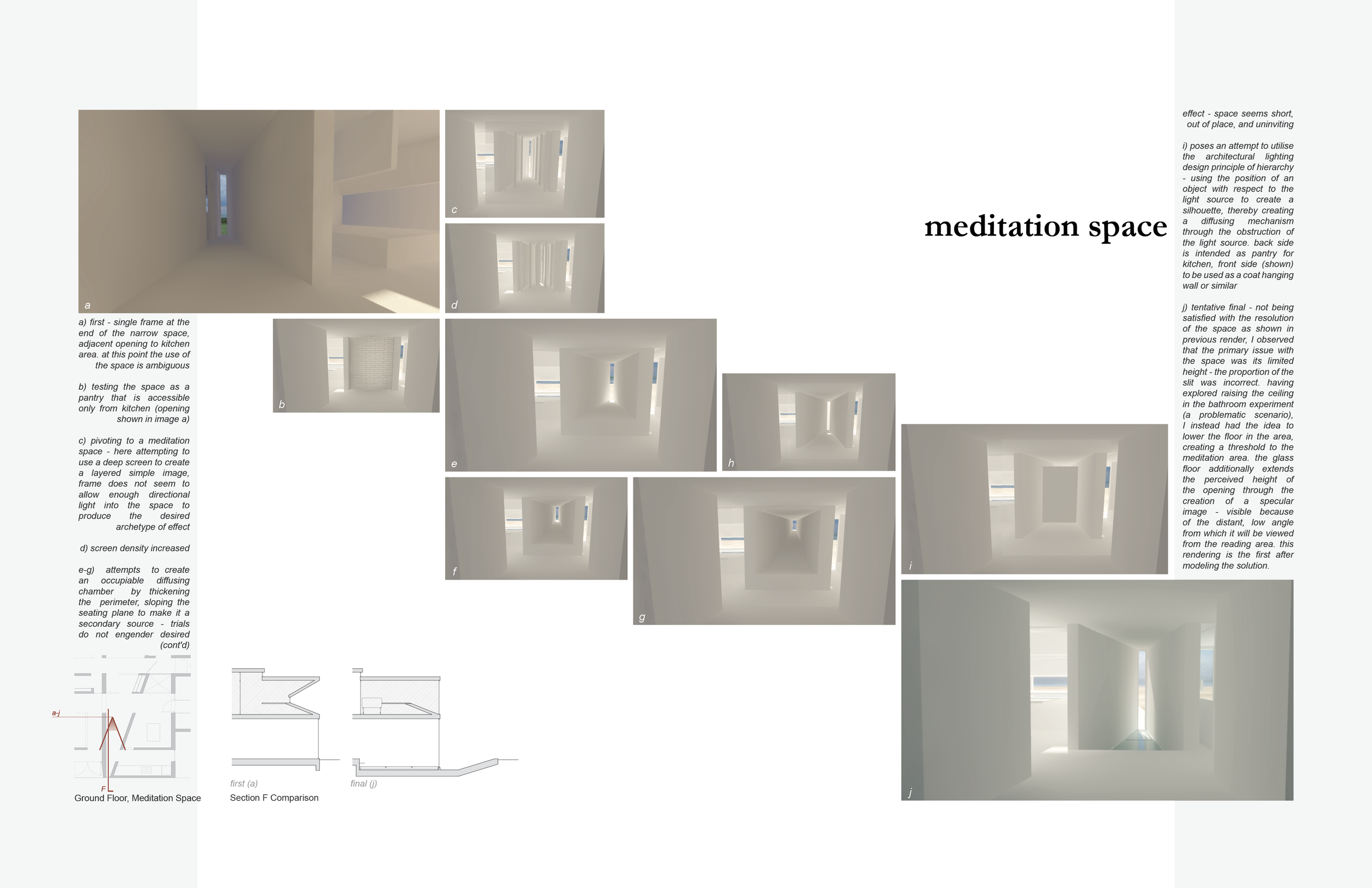SEASHORE DWELLING
Thesis Design
Date_december 2017
Media_illustrator. photoshop. rhino 5. grasshopper.
Upon completing the methodological reference as the cornerstone of my thesis work, I wanted to test its usefulness. Having briefly looked at Vector Architects’ Seashore Library project as a case study in the past, I decided to use the isolated site of the existing library project as a baseline test site for an addition that I would design using the reference. In order to test the reference for its effectiveness as both a study and generative tool, I first examined the project through the lens of the reference and then adapted my findings to suit the program and privacy needs of the addition (a dwelling at grade and library maker space extension above). The drawings below show the existing building in both plan and section, indicating the dedication of the existing design to the production of varied effects of light. The system strategy that was extracted from the existing project was the geometry-based slit aperture, which can be readily observed in the sections below. Each space in the addition was developed to combine this slit aperture with a diffusing optic device to maintain the privacy of the librarian in their home. Both geometric and parametric tuning were used to refine the quality of light in each space.
Drawings of Proposed Addition
















Working Drawings, with notes regarding the application of the methodological reference:
These drawings show the development and design of each space. Every image was created during the design process as I attempted to analyse and refine the light effect produced by my initial application of the methodological reference. They highlight two different strategies: the algorithmic tuning process allowed me to hone a light effect that I was able to reasonably successfully design for and produce using the reference alone, with refinements in such variables as scale and positioning, while geometric tuning allowed me to add and subtract elements as I tested them through rendering for their effectiveness.


















